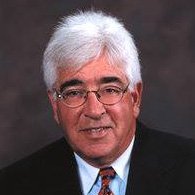Facebook – Continually Evolving
July 19, 2016
 Facebook made the decision a few years ago that it would suppress the number of people who see the posts on a business page unless you pay to boost the post. This is the classic drug dealer business model – get someone hooked – take it away – and they will pay. It still benefits business pages to reach the audience that has LIKED the page since these folks have “opted in” to be marketed to. As dentists, we have to decide what to post and what to promote. You should understand that a boosted post receives about 500X the exposure of a non-boosted post.
Facebook made the decision a few years ago that it would suppress the number of people who see the posts on a business page unless you pay to boost the post. This is the classic drug dealer business model – get someone hooked – take it away – and they will pay. It still benefits business pages to reach the audience that has LIKED the page since these folks have “opted in” to be marketed to. As dentists, we have to decide what to post and what to promote. You should understand that a boosted post receives about 500X the exposure of a non-boosted post.
While Facebook allows boosted posts to be somewhat targeted to an audience, those targeting opportunities are far fewer than if you used Facebook Ads. An ad campaign is a step up in cost and involvement. For those ads, in the past, Facebook would allow you to target based on age, relationship status, geography, and the likes and interests. While these are great ways to target an audience, it still was very broad targeting and could present challenges to an advertiser.
In the last few months, Facebook has made changes to its Ad Platform and now lets advertisers get really specific when it comes to targeting. Now you can target by household income. You can also now target people by where they work and even their job title. This is pretty exciting stuff! For dentists trying to promote more expensive procedures like implants, veneers, and adult orthodontics, you now have the ability to specifically hone in on prospective patients like never before and really speak to them and tell your story.
Marketing on Facebook is undoubtedly going to continue to get more expensive as more people realize the value it holds. There has never been a better time to utilize this platform to increase brand recognition and tell your audience why your practice is the best practice. That being said, I believe it is tough to do this on your own. Unless you are extremely Internet and social media savvy, you need a real Facebook expert to help you decide on a program and a budget. I continue to recommend Heather LoGrippo, founder of Expose Yourself Public Relations. She can be reached at 617-957-3868 or exposeyourselfpr.com
Wouldn’t This be Nice
July 7, 2016
 This is my 20th year working full-time as a dental practice management consultant. If I had to make a decision about the most common “issue” that I witness in a dental practice, it would be the inability of the “back” and the “front” to get along and work in a harmonious and supportive relationship. Honestly – no other “issue” is even close! While it is rarely a flat out war, it is definitely prevalent in varying degrees.
This is my 20th year working full-time as a dental practice management consultant. If I had to make a decision about the most common “issue” that I witness in a dental practice, it would be the inability of the “back” and the “front” to get along and work in a harmonious and supportive relationship. Honestly – no other “issue” is even close! While it is rarely a flat out war, it is definitely prevalent in varying degrees.
It defies logic. It remains a continuing source of frustration to the doctor/owner. Why can’t these kids play happily together in the same sand box since they are all so capable of performing their own jobs?
Perhaps part of the reason is that the jobs and responsibilities of the administrative staff and the clinical staff are so different. And doctors are usually much more in sync with the clinical staff because they work together in the back. Frankly, many dentists I see are unaware and somewhat unappreciative of the tasks that are performed at the front. So unwittingly, the doctor may be contributing to the problem.
On a typical day, clinical staff complete their tasks – take care of their patients – clean up – and then go home. The staff at the front could work 24/7 and they would still never finish everything on their plate.
Clinical staff in the back – even though they are usually only taking care of one or two patients at a time – are often burdened with reassuring frightened patients or trying desperately to stay on time . Meanwhile, staff at the front are juggling a multitude of tasks. The phones are ringing constantly with questions about insurance, billing, new patient inquiries and changes of schedule. These calls all need to be fielded and responded to at the same time that routine day to day tasks have to be accomplished.
Here are my ideas for solving the dilemma.
1. Switch roles for a day. I believe a lot of problems come from a lack of understanding of other people’s jobs. Let the front desk person observe first hand why the back needs to be given more than a five minute notice that the ten o’clock patient scheduled for a crown prep has been replaced by someone needing molar endo. Let the clinical person understand why the front desk person needs to be informed that a discount was offered BEFORE she starts making the financial arrangements.
2. Have the doctor assume more ownership of the problem. The doctor is the leader of the team. He or she is responsible for creating a happy work environment. The doctor must avoid favoritism of the clinical team and start showing more respect and admiration for the job performance at the front.
3. Institute a bonus/incentive plan for staff. This forces people to work together or suffer the consequences.
4. Focus on having a dynamite morning huddle. It is by far the best way I know to successfully plan for the day ahead while at the same time review the previous day and learn from that experience.
This shouldn’t be so difficult. It is by no means rocket science. In fact, I would reduce this problem to its core by simply challenging everyone to be professional, respectful and mature. Accept the challenge. Eliminate the pettiness and the blaming. Play peacefully in your sand box.

